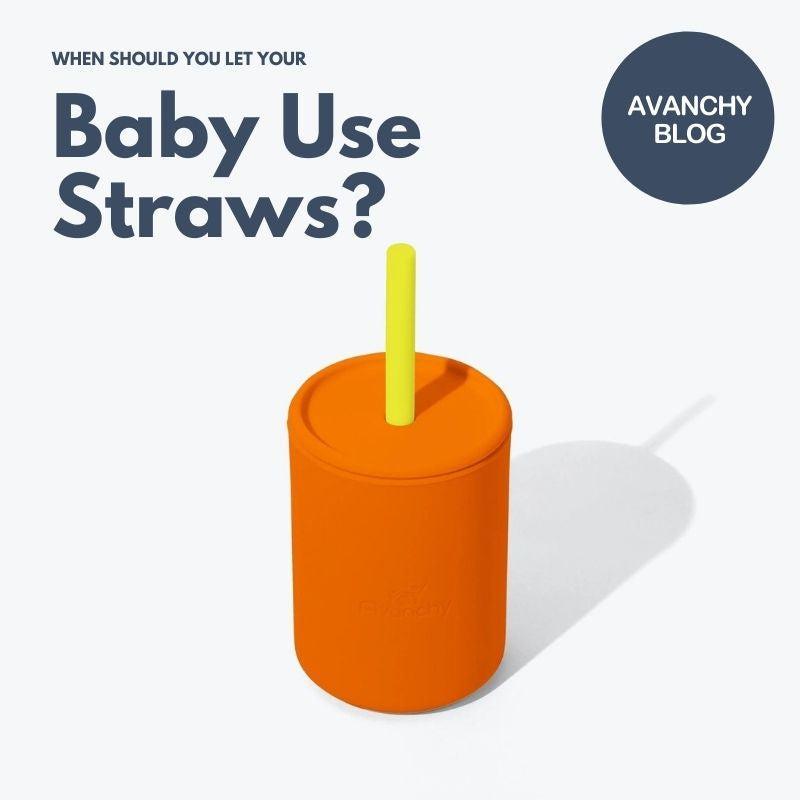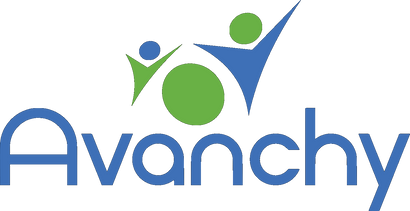BLACK FRIDAY Up to 60% OFF SALE!
BLACK FRIDAY Up to 60% OFF SALE!
Feeding Essentials

When Should You Let Your Baby Use Straws?
May 18, 2022 5 min read
Using straws and adult cups is a big part of learning how to eat on your own and sit at the table with the rest of the family. When your little one is ready to take this next step in their life, you can help them by being patient, supportive, and knowledgeable.
There are many common questions parents have about this milestone. When should you let your baby use straws? How can you help them learn to drink with a straw or an open cup? Every child is different, but there are a few universal tips you can keep in mind as you learn and grow together. Use this guide to understand the transition from bottles or sippy cups to straw cups.
Why Choose a Straw Cup?
Straw cups are an ideal transitional step between bottles and open cups. While many parents turn to sippy cups during this stage, there are a few reasons why straw cups are better. First and foremost, straw cups and sippy cups require the use of different oral skills. Your kid might enjoy their sippy cup now, but it teaches them a drinking skill they will never use once they outgrow that cup. Straw cups, on the other hand, teach your child how to suck liquid up a straw—a skill your baby will continue to use throughout their life.
Moreover, the use of sippy cups doesn’t always come naturally to babies. If your child becomes frustrated with their sippy cup, they might be reluctant to continue transitioning away from their bottle. Straw cups are an easier way for your little one to learn and grow.
Finally, straw cups create an easier transition to open cups. In fact, many straw cups come with lids and straws that you can simply remove when your child is ready. This means your baby can learn to drink from an open cup with the same dishes they used when learning to drink with a straw. The familiarity is both useful and encouraging as your little one grows.
The Right Age To Start Learning
When exactly should you let your baby use straws? The answer is different for every child. A general rule is to introduce straws between 6 and 12 months. This is the perfect age for your baby to learn new skills as they move away from formula and bottle feeding.
You can pair straw cups and open cups with the introduction of solid foods. One way to tell if your baby is ready for both solid foods and learning how to drink from a cup is to pay attention to how they act at the table. Make sure your baby can sit up on their own and support their head and neck without assistance. These skills are essential for your baby to eat and drink on their own safely.
Remember that this period of time is not about transitioning fully to cups. Instead, these months are about building the skills necessary to drink from a straw in a low-pressure setting. Once your baby is familiar and comfortable with their straw cups, they’ll be able to confidently and successfully transition away from bottles and breastfeeding.
Learning How To Use Straws
Drinking from a straw is surprisingly natural for some children. Babies have a strong sucking reflex that helps them instinctively drink from a straw; if your baby doesn’t immediately catch on, don’t fret. Sometimes, your little one just needs gentle guidance. Like with all things, it helps to lead by example. Use your own straw cup and demonstrate how to close your lips around the straw and suck. Remember to be patient; it might take a few tries—and a few messes—before your baby gets the hang of it.
If your baby is still struggling, you can try the pipette method. Dip a straw into your baby’s cup, then cover the top end of the straw with your finger. This traps liquid inside the straw. Lift the straw and hold it out toward your baby for them to wrap their mouth around. Once they do, remove your finger and let the liquid drip into their mouth. This process helps your baby associate the straw with drinking while also practicing putting the straw in their mouths.
Try this a few times, then put the straw in the cup like normal and offer it to your baby. After a few attempts, your baby should get the hang of drinking from a straw.
Tips for Helping a Reluctant Learner
Even if your baby seems ready to try a straw cup, they might be a little reluctant to learn. That’s okay! Everyone grows at their own pace. The important thing is to be patient and supportive throughout the learning process. There are a few techniques you can use to help your reluctant learner become more comfortable and interested in their straw cup.
The first tip is to wait it out. Your baby might be more focused on trying new foods or holding their spoon or fork than learning how to use a straw. Keep bringing the straw cup to meals and showing them how to drink, but don’t put pressure on your baby to master it yet. When they're ready, they’ll start reaching for the cup on their own.
Mixing up your environment can also help. If your baby is reluctant to reach for their straw cup during meals, it might be because they feel too much pressure or are too distracted while at the table. Try introducing a straw cup with water outside of meals. A simple setting change might make your baby more open to trying new things.
Features To Look for in a Straw Cup
Having the right cup can make learning easier for your baby. There are a few key features to look for in your little one’s first straw cup. First, choose safe materials that won’t hurt your baby’s sensitive mouth. Silicone is a flexible and gentle material that’s easy for your child to hold as they learn their way around a straw cup.
You should also look for a smaller cup that fits in your baby’s hands more naturally. Smaller cups make it easier for your baby to take little sips, which reduces the chance of spilling as they learn to drink. It also helps to use a shorter straw, as it requires less effort.
When your baby is ready to try a straw cup, give them the best option available with silicone baby cups from Avanchy. With gentle materials, thoughtful designs, and playful colors, our sustainable baby dishware makes mealtime more enjoyable for everyone.

Subscribe
Sign up to get the latest on sales, new releases and more …










